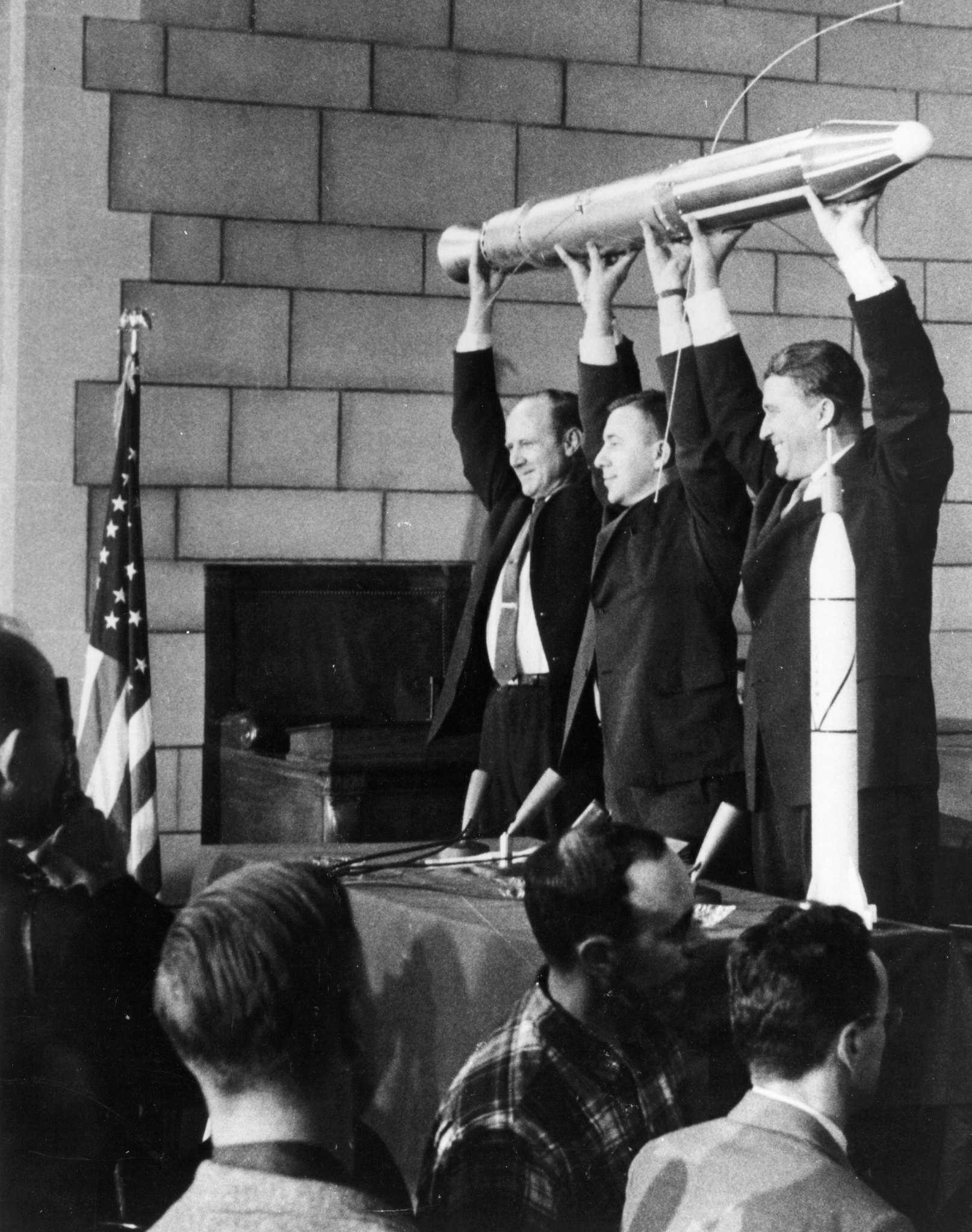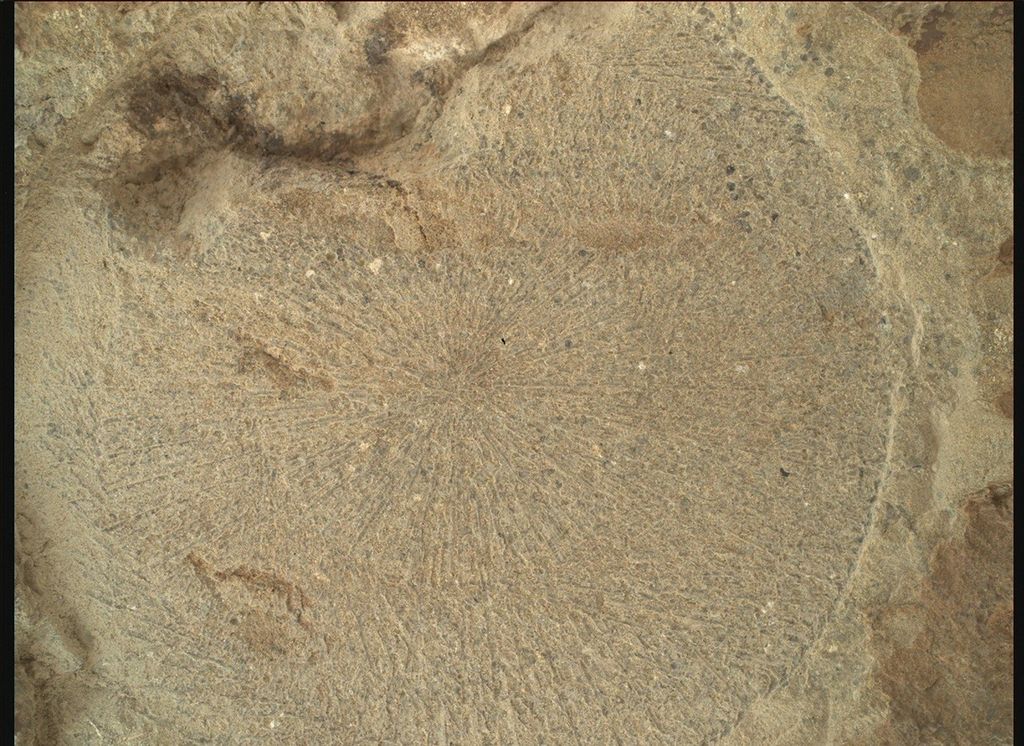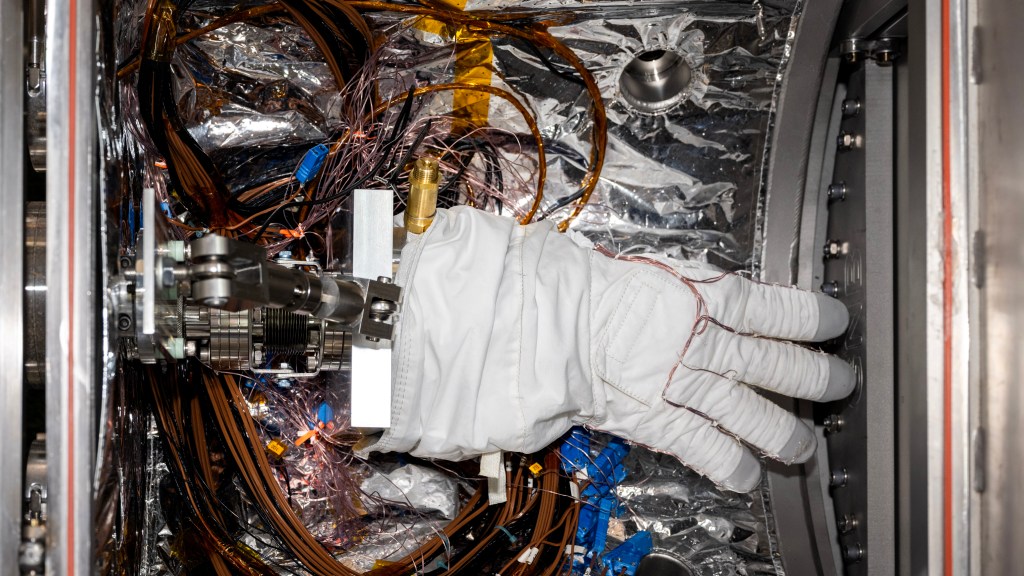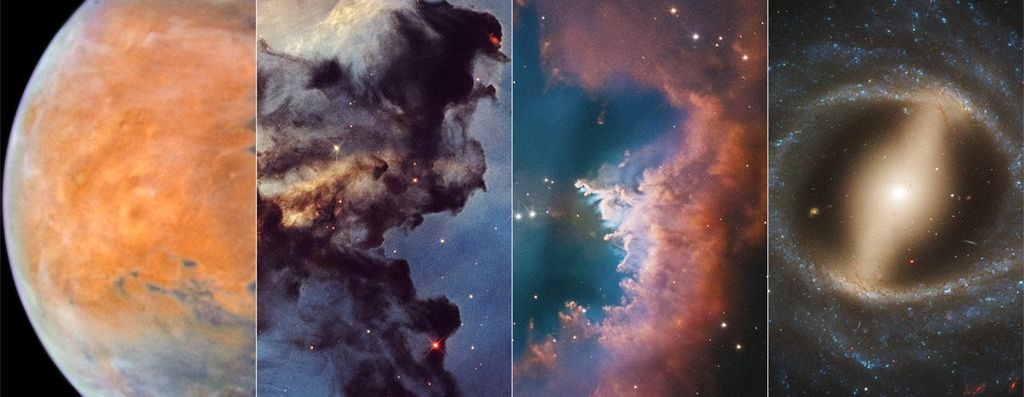On September 29, 2011, NASA announced the short list for five potential new “Explorer class” spacecraft. These missions are by definition small and relatively inexpensive, designed to be led by a small team.
The Explorer class missions are numbered at 92 so far, with more constantly planned. Explorer class spacecraft recorded the signature left over from the big bang. They mapped out the complex geometry of Earth’s magnetic environment. They found gamma rays coming from everywhere in the sky. They help warn scientists of incoming radiation from solar flares.
“The neat thing about the Explorers is that they’re tailored to a specific problem,” says Wilt Sanders the program scientist for the Explorer’s Program. “That’s their strength. They’re relatively inexpensive but they’ve come up with game changing results.”
And it all began over five decades ago.
The First Explorer
It was January 31, 1958 and a Juno 1 rocket was almost ready to launch. It carried precious cargo – a satellite called Explorer 1, that everyone hoped would be the first U.S. satellite in space. The mood among those at Cape Canaveral Air Force Station, Fla. was tense. Not only had the Soviets already successfully launched Sputnik into space, but three months earlier, a rocket attempting to launch a U.S. satellite had flown a mere four feet before tumbling back to the ground.
The familiar countdown began: “10 . . . 9 . . . 8 . . . ” and at 10:48 p.m. EDT, the Juno shot up, climbed over 200 miles into the sky, and released Explorer 1 into space. It wasn’t until some two hours later, when the satellite had made its first complete orbit of Earth and was in close enough range to send a signal that it was operational, that the observers rejoiced. The very first U.S. satellite was officially a success.
For many, the tale of Explorer 1 stops here, a triumph of human ingenuity in reaching space. But, truly, that’s only the beginning of the story. “Explorer 1 was also a science mission,” says Willis Jenkins, the program executive for NASA’s Explorer program. “This wasn’t just launched to get a satellite up in space, it was meant to bring science data back.”
And it certainly did. Explorer 1 contained experiments that turned our understanding of space upside down. To this day, scientists try to understand the dynamic, seething environment encircling Earth – known as the Van Allen radiation belts – that Explorer 1 helped discover.

Space Science Begins . . .
Explorer 1 was also, of course, the first in a long line of scientific workhorses.
Some of the latest explorers have names that are well known in the scientific community: the Swift Gamma Ray Burst Explorer (Swift) and the Cosmic Background Explorer (COBE). (The last one brought home data that earned a Nobel Prize.) But the early Explorers were simply named with numbers, and it is these that are some of the unsung heroes of space exploration – making new discoveries that scientist today take for granted.
Explorer 1 and Explorer 3, for example, launched in January and March of 1958, respectively. They carried an instrument built by the University of Iowa scientist James Van Allen that could detect energetic particles in space. This instrument was quite simply a single Geiger counter attached to a miniature tape recorder. As the satellites climbed upwards, the rates of the particles usually increased but, periodically, they zeroed out completely. Van Allen and his team realized this was neither because the particles disappeared nor because the instruments failed, but because the radiation counts were so high that the sensors overloaded. From this, Van Allen deduced that a swath of intensely energetic particles was trapped in a circle around Earth. Ultimately two such belts were found, and they’re now known as the Van Allen Radiation Belts.
Not all was easy on those early missions. Neither Explorer 2 nor Explorer 5 even made it into orbit, due to launch rocket failure. While such losses were devastating, the amount of time going into building these early, simpler satellites was nothing like the years it takes today. All five of the first Explorers were launched within the first six months of 1958.
By the time of Explorer 10 in 1961, the Explorer Program was now run by the newly founded NASA. They’d also earned the right to have names as well as numbers, albeit modest ones: Explorer 10 was also known as P 14. It gathered data for only 52 hours since its goal was merely to fly up out of Earth’s magnetic environment and bring back information from interplanetary space on the other side. But the satellite saw a far more complicated magnetic system than expected.
“At that point the magnetosphere was thought to be a sphere conforming to the shape of Earth,” says Frank McDonald who became a project scientist for the Explorer Program at NASA’s Goddard Space Flight Center in Greenbelt, Md. in 1961 and is now a professor emeritus at the University of Maryland. “We didn’t know how complex a shape it was, or that there was a magnetotail flurrying out behind.”
Explorer 10 discovered this “magnetotail” as it moved through the night side of Earth, facing away from the sun. The instruments detected an area devoid of the electrically charged solar wind steadily streaming off the sun, since it was deflected by Earth’s own magnetic field. This “shadow”, the magnetotail, extends some 800,000 miles long, well past the orbit of the moon.
As the Explorer program grew, the satellites were eventually divided into those that study the sun-Earth system, or heliophysics, and those that study astrophysics. But in the early days this was originally considered all part of general space science. However, that was beginning to change.
The next, Explorer 11 or S15, was used to search for cosmic gamma radiation, and indeed found that it came from all directions, giving birth to the field of gamma ray astronomy. The field has matured significantly over the decades and now studies such things as gamma ray bursts that originate from the distant universe, thought to be the signatures of black holes and certain supernovae.
Explorer 12 launched in August of 1961, just over 50 years ago, but it remains a historical highlight for many a contemporary studier of space. This satellite cemented into cannon much information we know about space today. It was the first to identify Earth’s “magnetopause” – the boundary between Earth’s magnetic environment and interplanetary space. It also improved our understanding of the Van Allen radiation belts and Earth’s magnetosphere. Notably, it helped establish that the radiation belts were not so strong that they would prevent manned spaceflight.
“We published science papers on solar activity almost every few weeks based on Explorer 12,” says emeritus astrophysicist Thomas Cline at Goddard, whose first job at NASA focused on Explorer 12. “We had constant mini-discoveries. As soon as you put an instrument in space that has never been used before, you invariably observe things you’ve never seen before.”
. . . And Continues
From Explorer 12 onward, many of the early Explorers had highly elliptical orbits that shot the spacecraft well outside of Earth’s magnetosphere, into interplanetary space. Scientists like Cline would use these spacecraft to expand their understanding of interplanetary space. Explorers looked at the universe in many wavelengths, brought back information about the particles in space, and mapped out the structure of the early universe.
On the heliophysics side, while those early missions simply identified the shape of Earth’s magnetic environment, today’s spacecraft try to spot currents in that magnetotail, to determine the shape of Earth’s magnetic fields, and to see how large inputs of energy from the sun cause space weather storms that can affect Earth.
When funding is available ,NASA selects new Explorers – and while the time it takes to build an Explorer is several years compared to the several months it often took in the 1950s and 1960s – the price tag still remains low and the scientific output prodigious.
The legacy of Explorer 1 goes on.
































